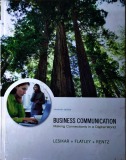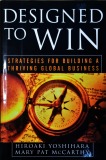Tài liệu Thư viện số
- Cơ khí, Chế tạo máy, Cơ điện tử (648)
- Công nghệ ô tô (226)
- Công nghệ thông tin (1246)
- Kỹ thuật Điện, Tự động hóa (433)
- Điện tử, Viễn thông (423)
- Lịch sử, Địa lý, Du lịch (214)
- Công nghệ Hóa, Môi trường (519)
- Công nghệ May & TKTT (186)
- Kế toán, Kiểm toán (500)
- Quản trị kinh doanh (1135)
- Tài chính - Ngân hàng (53)
- Ngôn ngữ (1926)
- Toán, Lý (374)
- Chính trị, Triết học, Pháp luật (316)
- Thể chất - GDQP (28)
- Văn học, xã hội (483)
- Đồ án, Khóa luận TN (6)
- Luận văn, luận án (3)
- Tài liệu tham khảo khác (825)
Danh mục TaiLieu.VN
- Mẫu Slide Powerpoint
- Kinh Doanh Marketing (39320)
- Kinh Tế - Quản Lý (30571)
- Biểu Mẫu - Văn Bản (123435)
- Tài Chính - Ngân Hàng (23744)
- Công Nghệ Thông Tin (56521)
- Tiếng Anh - Ngoại Ngữ (9738)
- Kỹ Thuật - Công Nghệ (44193)
- Khoa Học Tự Nhiên (27343)
- Khoa Học Xã Hội (43227)
- Luật - Kinh tế luật (6560)
- Văn Hoá - Thể thao - Du Lịch (71283)
- Y - Dược - Sức Khoẻ (83234)
- Nông - Lâm - Thuỷ sản (16418)
- Luận Văn - Báo Cáo (217024)
- Tài Liệu Phổ Thông (244133)
- Trắc Nghiệm Online (213578)
- Trắc Nghiệm MBTI
- Trắc Nghiệm Holland
Essential Methods for Planning Practitioners, Skills and Techniques for Data Analysis, Visualization, and Communication
This book assembles and organizes a selected range of methods and techniques that every planning practitioner should know to be successful in the contemporary global urban landscape. The book is unique because it links different aspects of the planning/policy-making enterprise with the appropriate methods and approaches, thus contextualizing the use of specific methods and techniques within a sociopolitical and ethical framework. This volume familiarizes readers with the diverse range of methods, techniques, and skills that must be applied at different scales in dynamic workplace environments where planning policies and programs are developed and implemented. This book is an invaluable resource in helping new entrants to the planning discourse and profession set aside their own disciplinary biases and empowering them to use their expert knowledge to address societal concerns. Contens:
+ Chapter 1: makes the case for the book, why people should read it, and how they should approach the material.
+ Chapter 2: Is a survey of contemporary planning theory, highlighting both successes and failures. Here, the book makes the argument that understanding historical and contemporary planning theories are necessary to understand how to select and deploy appropriate methods for data analysis, synthesis, and communication.
+ Chapter 3: Introduces readers to two case studies of neighborhoods in New York City, describing them using different types of maps and data visualizations to tell a context-sensitive story that links history, geography, politics, and economics that drive change in urban areas.
+ Chapter 4: Discusses approaches that help to frame planning questions, emphasizing the importance of communication and visioning techniques.
+ Chapter 5: Delves deeper into data-centered approaches from anthropological methods to modeling and scenario building, critically reflecting the pros and cons of each.
+ Chapter 6: Reviews the planning profession’s complex relationship with public involvement and makes the case for civic engagement to anchor planning practice.
+ Chapter 7: Discusses the challenges of implementation, encouraging practitioners to be cognizant of the politics and policies that impact and influence their technical analyses and contributions.
+ Chapter 8: Highlights individual skills that practitioners must cultivate to be successful in their work.
The book concludes by making the case for a 21st century planning that is context-sensitive, inclusive, and integrates social and spatial concerns
Thông tin trích dẫn: Essential Methods for Planning Practitioners, Skills and Techniques for Data Analysis, Visualization, and Communication. Laxmi Ramasubramanian#Jochen Albrecht. NXB Spinger, 2018.
Vui lòng truy cập địa chỉ sau để download và biết thêm thông tin chi tiết: https://lic.haui.edu.vn/media/Kinh%20t%E1%BA%BF/Essential%20Methods%20for%20Planning%20Practitioners,%20Skills%20and%20Techniques%20for%20Data%20Analysis,%20Visualization,%20and%20Communication%20content.pdf
Bạn đọc có thể tìm thêm tài liệu tại Thư viện ĐH Công nghiệp Hà Nội tại địa chỉ: http://lib.haui.edu.vn/opac80/
+ Chapter 1: makes the case for the book, why people should read it, and how they should approach the material.
+ Chapter 2: Is a survey of contemporary planning theory, highlighting both successes and failures. Here, the book makes the argument that understanding historical and contemporary planning theories are necessary to understand how to select and deploy appropriate methods for data analysis, synthesis, and communication.
+ Chapter 3: Introduces readers to two case studies of neighborhoods in New York City, describing them using different types of maps and data visualizations to tell a context-sensitive story that links history, geography, politics, and economics that drive change in urban areas.
+ Chapter 4: Discusses approaches that help to frame planning questions, emphasizing the importance of communication and visioning techniques.
+ Chapter 5: Delves deeper into data-centered approaches from anthropological methods to modeling and scenario building, critically reflecting the pros and cons of each.
+ Chapter 6: Reviews the planning profession’s complex relationship with public involvement and makes the case for civic engagement to anchor planning practice.
+ Chapter 7: Discusses the challenges of implementation, encouraging practitioners to be cognizant of the politics and policies that impact and influence their technical analyses and contributions.
+ Chapter 8: Highlights individual skills that practitioners must cultivate to be successful in their work.
The book concludes by making the case for a 21st century planning that is context-sensitive, inclusive, and integrates social and spatial concerns
Thông tin trích dẫn: Essential Methods for Planning Practitioners, Skills and Techniques for Data Analysis, Visualization, and Communication. Laxmi Ramasubramanian#Jochen Albrecht. NXB Spinger, 2018.
Vui lòng truy cập địa chỉ sau để download và biết thêm thông tin chi tiết: https://lic.haui.edu.vn/media/Kinh%20t%E1%BA%BF/Essential%20Methods%20for%20Planning%20Practitioners,%20Skills%20and%20Techniques%20for%20Data%20Analysis,%20Visualization,%20and%20Communication%20content.pdf
Bạn đọc có thể tìm thêm tài liệu tại Thư viện ĐH Công nghiệp Hà Nội tại địa chỉ: http://lib.haui.edu.vn/opac80/
Từ khóa: Essential Methods; Planning Practitioners; Skills;Techniques, Quản trị kinh doanh, Laxmi Ramasubramanian#Jochen Albrecht
10 p tailieu_haui 21/06/2022 99 0






